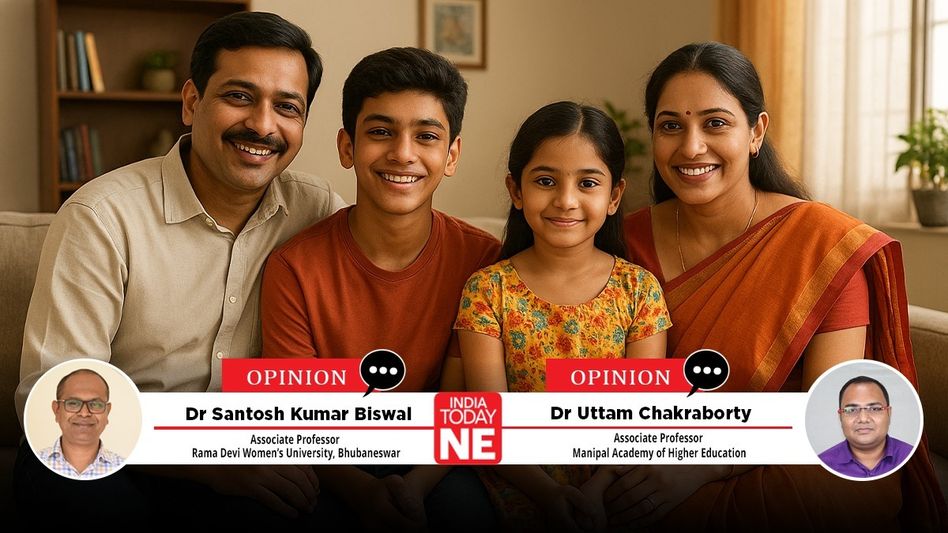The New Middle Class and New Identity
India's new middle class is reshaping social and economic patterns with distinct values and aspirations. Their influence extends to politics, culture, and governance reforms across urban and semi-urban India

India is in the midst of decolonising the middle class. Sociologist Ravinder Kaur has rightly said that the Indian middle class is not merely a consumer category, but rather it is a national dream. Long working hours for survival, striving to pay off the EMIs, stable salaried employment and unique consumption habits for maintaining value for money among the new middle class in India have now become passé.
There is a paradigm shift from survival and status-driven consumption to purpose-driven living, which accommodates sustainability, entrepreneurship, and civic engagement. This middle class is reshaping the definition of success, whether through rapid entrepreneurship, conscious capitalism or quiet quitting in the face of corporate fatigue, as the middle class has begun to redefine equity goals and “getting ahead” to be a measure of “making a difference”. This class is increasingly becoming a moral and imaginative agent capable of framing the stories of contemporary India.
A couple of months back, on social media, Sameer Maheshwari, founder and CEO of HealthKart and an IIT Delhi alumnus, was thankful for his middle-class upbringing, which contributed to the values, resiliency and entrepreneurial spirit. Now, the new identity of the middle class is for a better civic, creative and conscious approach.
Around 40 per cent of India’s population in the middle‐class category significantly contributes to the nation’s GDP. Additionally, it is believed that India has the largest estimated middle-class population in the entire South Asia. However, here is the paradox for several years now. The single most intriguing and vexing contradiction for India has been its middle class, for its aspirational and anxious, ambitious but constrained, modern yet nostalgic. They have been the architects of India's economic rise and have fuelled the digital revolution. Yet plumbed beneath all of that visible stability is something much deeper, and that something is a muted revolt.
Across our cities and small towns, throughout family WhatsApp groups and MBA classrooms, a middle-class consciousness is emerging. This generation is not rejecting ambition; rather, they are just appropriating ambition for themselves in an engaging and meaningful manner. While the shift can be seen as subtler, it is truly seismic, and its ripples can be found everywhere: from consuming to careers, as well as in parenting and teaching in India’s best universities, it is everywhere. The real question is not whether the shift is happening or not.
A decade ago, there was a clear aesthetic to “aspiration” in India. Instances could be the corner-office MBA who went on international vacations or who had bank-financed a car. It was an identity with middle-class overtones, working for 14 hours a day, the competition of entrance examinations and competency tests, and the endless comparison with work peers and colleagues. Such an aesthetic no longer holds up. We have shifted in conversations from promotions to purpose and from remuneration increases to sanity. Young professionals are not only questioning their pay, but also how they are paid. Conversations about mental health, flexible working, and creative satisfaction should no longer be treated as add-ons of consideration.
This transformation somehow seems to be aligned with the global atmosphere. ‘Quiet quitting’ in the US and Europe was deliberated regarding the concerns of burnout, and the ‘Shikata ga nai’ in Japan is giving way to a younger generation demanding a level of autonomy in the workplace. The Indian version may be similar, but is no less valid.
Studies indicate that there is a 37% hike in spending on experiences by urban middle-class families. Our social media channels show this shift, but not in excess or over-the-top displays, but through meaningful expression. The new aspiration is not “I have it all”, but rather, “I am being myself”. At this juncture, the small-town population has eventually become the confident middle-class who remain regional or non-metropolitan. The Tier-2 and Tier-3 cities, including Coimbatore, Indore, Bhubaneswar, or Kochi are contributing to the new generation of confident professionals who still embrace community values. They are not looking to jettison or imitate Delhi or Mumbai; rather, they are authentically constructing ecosystems.
The middle class used to judge education mainly as a means of moving up in the social hierarchy now is embracing education as a means of gaining a sense of purpose. Both parents and students are asking fresh questions that no algorithm can answer. They require empathy, curiosity, and courage – all of which business schools should value and encourage. The National Education Policy (NEP) 2020 provides an opening through the encouragement of flexibility, interdisciplinarity, and global exposure. This blend of Indian roots and global relevance is precisely what India needs right now. The pedagogy moves with the souls and not necessarily the spreadsheets.
Perhaps the most promising transformation within the Indian middle class is cultural rather than economic. After decades of internalising competition - whether it be on school exams, corporate ladders, or social credit - the emergence of a new collaborative era has begun. Remote working options and the creator economy have blurred all these professional and geopolitical boundaries. This emerging ‘networked middle class’ believes more in collaboration than the competition.
The history of the middle class in India has always been a parallel story to the history of India, as it is multidimensional, polysemous, complex, and resilient. Today, the story has reached its highest point of evolution.
Aspiration is no longer a race; rather, it is a mirror. The middle class is increasingly beginning to imagine a definition of success on its own terms, and to do so is making India's institutions reconsider what they will teach, what they will celebrate, and what they will stand for.
(Chakraborty is an Associate Professor in TAPMI, Bengaluru, MAHE. Biswal is an Associate Professor, Department of Journalism and Mass Communication, Rama Devi Women’s University, Bhubaneswar)
Copyright©2025 Living Media India Limited. For reprint rights: Syndications Today









